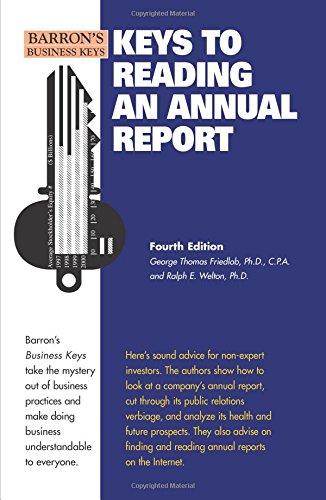Question
Master Budget with Supporting Schedules You have just been hired as a management trainee by Cravat Sales Company, a nationwide manufacturer of a designer's silk
Master Budget with Supporting Schedules
You have just been hired as a management trainee by Cravat Sales Company, a nationwide manufacturer of a designer's silk ties. The company sales have grown so rapidly over the last few years that it has become necessary to add new members to the management team. You have been given direct responsibility for all planning and budgeting. Your first assignment is to prepare a master budget for the next three months, starting April 1. You are anxious to make a favorable impression on the president and have assembled the information below.
The ties are sold to retailers for $15 each. The large buildup in sales before and during June is due to Father's Day. Recent and forecasted sales in units are as follows:
January (actual) 20,000
February (actual) 24,000
March (actual) 28,000
April. 35,000
May. 45,000 June. 60,000 July 40,000
August 36,000
September 32,000
All sales are on credit, with no discount, and payable within 15 days. The company has found, however, that only 25% of a month's sales are collected by month-end. An additional 50% is collected in the month following, and the remaining 25% is collected in the second month following. Bad debts have been negligible.
The management wants to minimize the probability of a stock out of inventory items. The management wants ending inventory to be equal to 30% of the following months budgeted sales in units.
Two yards of material are required per unit of product. Management does not want to run out of direct materials, so a policy has been established that materials on hand at the end of each month must be equal to 10% of the following months production. Material cost is $2.50 per pound.
Purchases are paid: 50% in the month of purchase and the remaining 50% in the following month.
Each unit of product requires 0.15 hours of direct labor. Assume that the Company has a no layoff policy so all employees will be paid for 40 hours of work each week. Workers are paid at the rate of $8 per hour regardless of the hours worked. For the next three months, the direct labor workforce will be paid for a minimum of 1,500 hours per month.
Manufacturing overhead is applied to units of product based on direct labor hours. The variable manufacturing overhead rate is $10 per direct labor hour. Fixed manufacturing overhead is $65,000 per month, which includes $22,000 of noncash costs (primarily depreciation of plant assets).
Compute the Ending Finished Goods
The company's Selling and Administrative expense is divided into variable and fixed components, monthly operating expenses are given below:
Variable: ...........................$2 per unit sold
Fixed:
Wages and salaries. 28,000 Utilities. 24,000 Insurance expired 8,200
Depreciation Office Equipment. 20,000
Miscellaneous 3,000
Land will be purchased during May for $150,000 and Equipment of $75,000 during June in cash. The company declares dividends of $42,000 each quarter, payable in the first month of the following quarter.
The company maintains a 12% open line of credit for $75,000. Desires a minimum ending cash balance each month of $30,000. The Company can borrow money from its bank at 12% annual interest. All borrowing must be done at the beginning of a month, and repayments must be made at the end of a month. Borrowings and repayments of principal must be in round $1,000 amounts.
Interest is computed and paid at the end of each quarter on all loans outstanding during the quarter. Round all interest payments to the nearest whole dollar. Compute interest on whole months (1/12, 2/12 and so forth). The company wishes to use any excess cash to pay loans off as rapidly as possible.
The company's balance sheet at March 31 is given:
Assets
| Assets |
|
| CASH | $251,000
|
| ACC. RECEIVABLE | 405,000
|
| Raw Material (10,500)
| 19,000
|
| Finished Goods
|
95,320
|
| Prepaid insurance
|
77,905
|
| Land
| 70,000
|
| Equipment, net of depreciation
|
202,700
|
| Total assets
| $1,120,925
|
| Liabilities and Stockholders' Equity
|
|
| Accounts payable, purchases
|
77,225
|
| Dividends payable
|
42,000
|
| Note Payable
| 325,000
|
| Capital stock, no par
| 300,000
|
| Retained earnings
| 276,700
|
| Total liabilities and stockholders' equity
|
$1,120,925
|
|
|
|
Required:
1. Prepare a master budget for the three- month period ending June 30.
-
SalesBudget
-
ExpectedCashCollections
-
Production Budget
-
DirectMaterialsBudget
-
Cash disbursement for materials
-
Direct Labor Budget
-
ManufacturingOverheadBudget
-
EndingFinishedGoodsInventory
-
Selling and Administrative Budget
-
Cash Budget
-
A budgeted income statement for the three-month period ending June 30. Use the contribution approach.
-
A budgeted balance sheet as of June 30.
*** PLEASE MAKE ALL THE PROCESS TO UNDERSTAND WHERE THE NUMBER ARE CALCULATED.
Step by Step Solution
There are 3 Steps involved in it
Step: 1

Get Instant Access to Expert-Tailored Solutions
See step-by-step solutions with expert insights and AI powered tools for academic success
Step: 2

Step: 3

Ace Your Homework with AI
Get the answers you need in no time with our AI-driven, step-by-step assistance
Get Started


